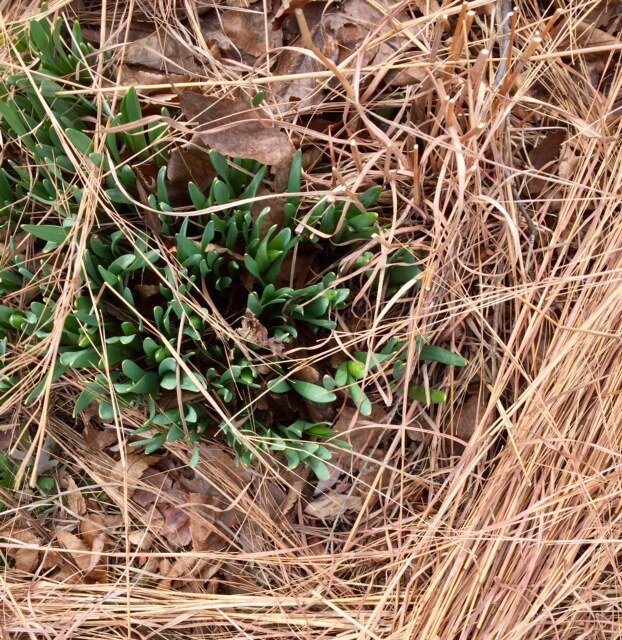Feed Me, I'm Hungry
I've spent the last few weeks getting reacquainted with my garden. Aside from the usual cleaning up chores, I've been assessing the condition of the plants. Some of them look a little hungry, like this Ilex crenata 'Drops of Gold', a new shrub I fell in love with last spring. It didn't put on any new growth last summer and still looks a bit sparse.
Here's another - a Thuja occidentalis (arborvitae) I've been nursing along in a back border. Looks pretty terrible doesn't it? I'm tempted to yank it out.
Part of the problem is the soil. It's lean, sandy stuff I've been amending for years, but it's always hungry for more. My solution? A yearly spring regime of top dressing with compost. I used to pick up big loads of it in our truck, but it's backbreaking work! After going at it for a number of years, I decided to do a better job of making my own.
Last spring my husband built me a state of the art compost bin, so I now have a less haphazard and healthier looking pile, albeit small.
I focus on problem areas like this first, covering the struggling ilex and arborvitae with about an inch of compost around the drip line..
While I was at it, I remembered that the Cornus kousa (dogwood) planted next to it didn't look so happy last summer either, so I spread it on the whole bed. I kept going until I ran out of usable compost. This stuff is like magic - the plants respond to it immediately. For a scientific explanation I asked my friend Nellie Gardner, an agronomist and horticulturist at the Darwin Martin House (darwinmartinhouse.org) in Buffalo to weigh in. She explained it like this, "organic matter breaks down by releasing nitrogen slowly to the plants and the mycorrhiza channels nutrients directly into the root system. The plants benefit from a slow release of nitrogen and other nutrients and the roots are better able to grow in the improved soil tilth and structure."
I like applying it in early spring because it gives the plants a jump start, acts as a mulch and helps to conserve on watering. It looks nice too.
I can't compost all of the leaves I have on my property, so I let them break down in the beds. It didn't take much to get me on board with this idea - hauling them around in a tarp isn't my idea of a fun day in the garden. In this vegetable garden, they add tilth, (referring to its physical condition) to the soil. Adding organic matter allows for air infiltration and movement of water that allows plants to have healthier root systems.
It's amazing how quickly they break down, and in this vegetable garden, they look neat enough to suit me.
At closer range in shrub and perennial beds, I rake leaves to the back areas and pile them up under trees and shrubs. Layers of rotted leaves break down and funnel nutrients into the plants, so I'm composting in place. "There's a microbial relationship going on here, " explains Nellie, trees produce leaves, which in turn produce nutrients that go back into the soil - all of that biological activity feeds the root system of the plants.
I used to cut ornamental grasses down and get rid of them until she convinced me to leave them in place as mulch. Her reasoning makes sense - many grasses such as Schizachyrium scoparium (little bluestem) and panicums are thin and break down partially over the winter, by the time you cut them down they're pretty dried out. Thicker grasses, such as Miscanthus varieties can be chopped up in smaller pieces to help them break down faster.
When the daffodils start coming up, this planting of little bluestem gets chopped down. I stomp on it to keep the clippings from blowing around.
Aside from the benefits of doing less work, these practices continue to improve the quality of the soil in my garden and the plants guzzle the nutrients down appreciatively. After all, this is pretty much just following what plants do in nature, and as my frieind Nellie says, "you're in the food chain helping it from the ground up. If you feed the soil it feeds you back."











